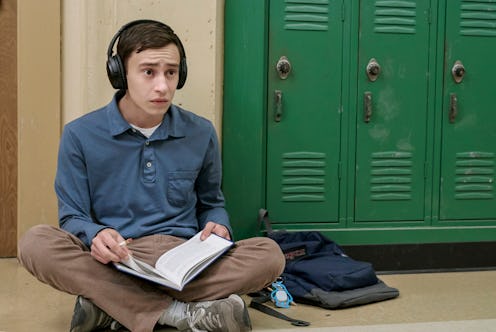Entertainment
'Atypical's Autism Representation Falls Short

Finding the balance between humor and earnestness can be tricky. In Netflix's Atypical, which premiered Aug. 11, this balance is sought in a fictional narrative about a teen who is on the autism spectrum. However, Atypical's relatively traditional sitcom structure makes it difficult for the show to portray a true autistic experience. Spoiler warning for Atypical Episodes 1 and 2.
While Atypical creates a dialogue around the struggles that individuals on the autism spectrum face, it doesn’t quite complete the circle to provide much needed representation. In order to create a family comedy, there are moments where Sam’s (Keir Gilchrist) unique personality is played for laughs or, worse, complete misinterpretation. Early in the series, Sam wants to begin dating, but worries his autism will get in the way. For example, in the first episode, Sam asks out a college girl at his friend’s insistence, but she is unable to pick up on his autistic cues. She interprets Sam’s deadpan, matter-of-fact tone as honesty, calling him “refreshing” and “hilarious.” When she invites him back to her dorm for sex, Sam panics and pushes her away. Angry, his date snaps, “Is there something wrong with your brain?”
Sam’s heartbreak is difficult to watch, especially as his family flounders in trying to find the right way to console him. Unfortunately, the show’s time crunch steps in, and all situations have to be resolved before the episode ends. Atypical’s trailer indicates that the focus of the show will be mostly on Sam and his decision to “put himself out there” as he tries to date. In an attempt to set up and resolve not only his narrative but the respective narrative of each member of his family in in 30 to 40 minute episodes, Sam's journey is pushed into shorter segments, and usually told through expository monologues at his therapist’s office.
Atypical claims to be about the autism experience, yet to be more comprehensive, the series should show Sam actually working through his dating challenges and his family trying to work through the transition of how his needs have changed as he's grown up.
In the second episode, Sam’s crush on his therapist, Julia, begins to escalate, and he and his father find themselves in her house with a tray of chocolate covered strawberries. (It’s a long story.) The joke here is misinformation: Sam has misinterpreted Julia’s interest in him; his father has mistaken Sam’s crush to be a teenage girl; and the strawberries are a misfire from his coworker. There is humor to be found here, but the moment where Doug and Sam talk it out while eating the strawberries, falls a bit flat. Sam obviously needs help in this department, and Doug’s vague pieces of advice don’t land with the literal-minded Sam. Sam’s misinterpretations also illustrate a common stereotype associated with autistic individuals. Sam is shown at a loss for any human interaction because he’s “atypical.”
According to USA Today, showrunner Robia Rashid consulted with a professor from UCLA's Center for Autism Research and Treatment in order to accurately portray Sam's condition. The intention is there, but when the laughs come at Sam's expense, it gets complicated.
Other comedies have tried to convey the autism experience, but have also fell flat due to their sitcom structure. For example, characters like Sheldon Cooper from The Big Bang Theory or Abed Nadir from Community display symptoms similar to autism, but are never actually diagnosed on screen. At times, their differences can make them endearing. But often, their differences alienate them from other characters and are employed mostly for comedic purposes.
Sam may be "different" as far as Atypical’s narrative is concerned, but the portrayal of autism in the show is actually quite ordinary. For starters, Sam is from a traditional, middle-class family and he’s a white, heterosexual male. He can’t make eye contact for too long, he has no filter, he’s extremely literal, and his fixations center around science. In other words, he is exactly how many TV audiences picture an autistic character.
In the real world, there may be individuals like Sam, but they are hardly the norm. Like manifestations of autism itself, the people who live with it are as varied as any individuals who are not affected. In an article for Teen Vogue, Alaina Leary discussed Girl Meets World’s autistic character Isadora Smackle, pointing out the pat characteristics of Smackle being afraid of physical contact and obsessed with science. “In addition to being autistic, I’m also queer and physically disabled, and it would be nice to see that diversity reflected back at me," Leary wrote. "Autism isn’t the entirety of a character’s identity, but just a facet of it."
Unfortunately, from what I've seen so far, Atypical does not completely succeed in what it sets out to do. By adhering to a familiar structure, the Netflix series is unable to venture outside the usual box of autistic representation on TV.